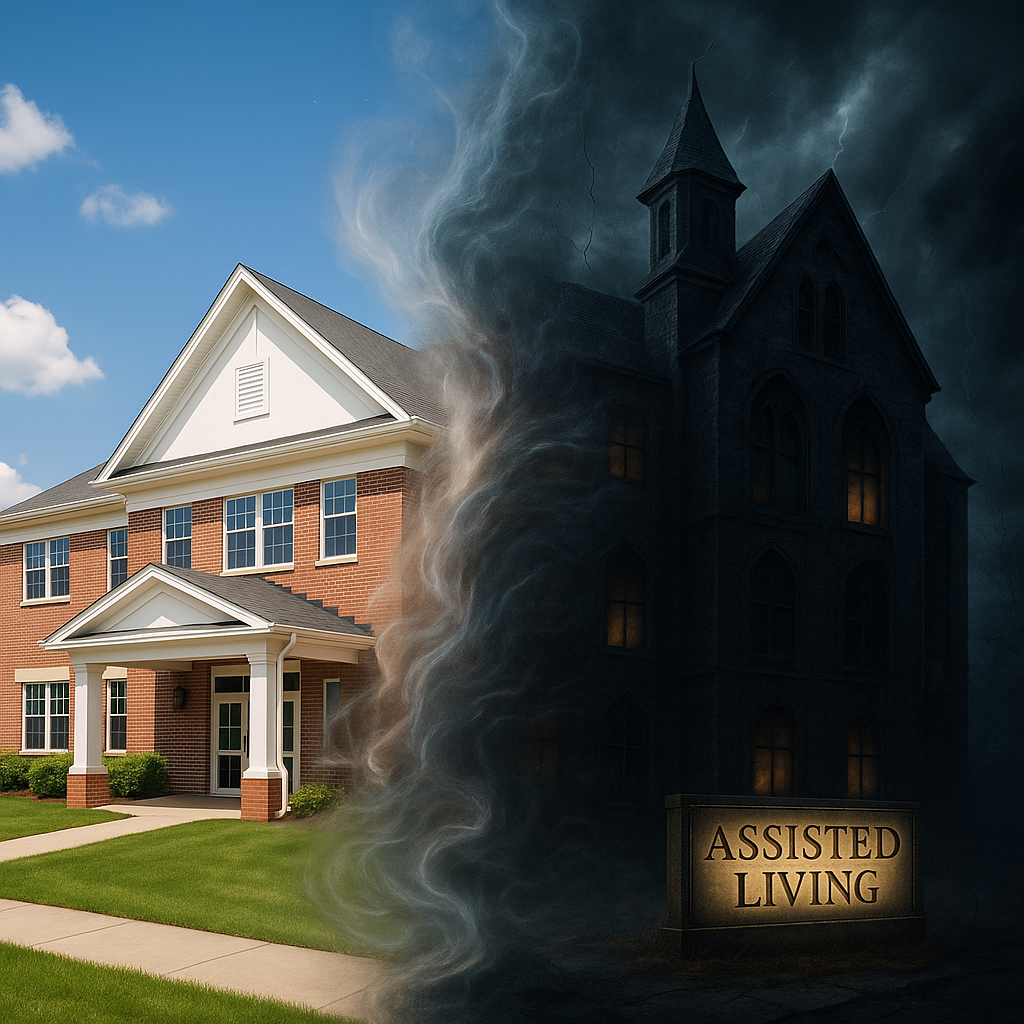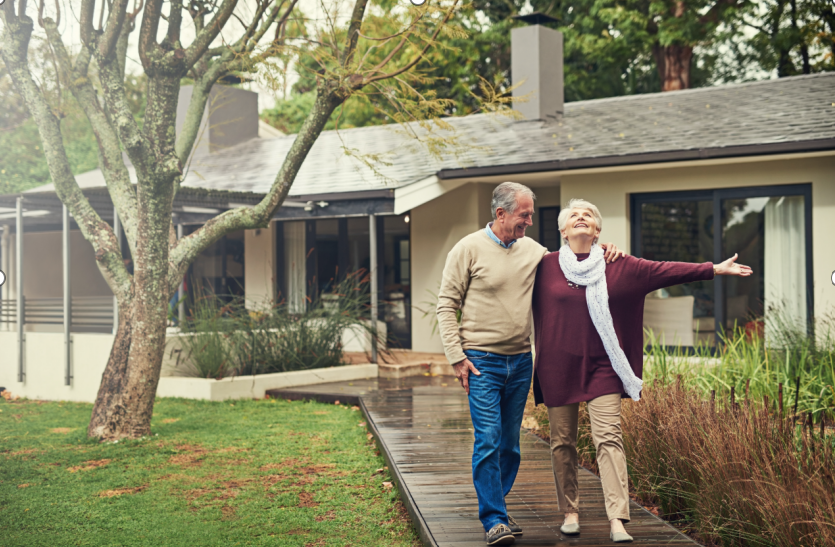BLOG
Nursing Home Alternatives: 3 Better Options for Your Loved One
Are you reluctantly considering a nursing home for your mom, dad or spouse? You may have heard bad things about nursing home care and are looking for alternatives to nursing homes. While nursing homes are often the “catch all” for all aging issues, not all older adults need to live in a nursing home to receive a high level of care. And receiving a dementia diagnosis does not automatically mean that the person needs to be in a nursing home. There are other options for family members or friends who need assistance from caregivers but are wary of nursing homes. A nursing home is not your only option!
It may be that a beloved elderly family member has been living on their own, but they now need help with the activities of daily living (ADLs). You may be having trouble giving your spouse sufficient home care. Or perhaps a family member or friend has just been diagnosed with Alzheimer’s or some other form of dementia. These are all difficult circumstances for any family.
At Assured Assisted Living, we understand the challenge of finding quality care, especially for individuals who suffer with dementia, and we’re here to help. Here are three nursing home alternatives to consider.
Why Do Many Elderly People Not Like Nursing Homes?
It may be an elderly person doesn’t want to move from a home that they’ve lived in for many years. They may be averse to change. But there have also been many stories about the problems in nursing homes, such as neglect, stolen personal items, medication issues and even abuse.
What Are the Facts About Nursing Homes?
Some nursing homes are better than others. However, there are inherent problems with large institutional facilities. A nursing home will likely have a high patient to nurse/aide ratio—that is, a caregiver may be responsible for many patients at once. This leads to less personalized senior care and possibly even accidents and negligence. Federal data has shown that most nursing homes in the U.S. had insufficient staffing to ensure quality patient care.
Top complaints of nursing home residents include slow response to calls, poor food quality, shortage of workers, lack of social interaction and sleep disruptions. Most nursing homes are in large, institutional settings that are more like a hospital than a private home, with many residents and not enough caregivers to provide individualized attention. They may have some activities for their long-term residents, but with overwhelmed, low-paid staff, the focus may be on attending to basic needs, rather than trying to enhance their quality of life through meaningful engagement.
Are There Alternatives to Nursing Homes?
There are certainly nursing home care alternatives worth considering. Some seniors stay at home and have family members or friends as caregivers. Others hire live-in or 24-hour assistants. There are also adult foster care options, board and care homes and assisted living facilities.
Alternatives to Nursing Homes
Nursing homes are designed for those with acute or long-term medical needs, but many older adults just need support for ADLs. When thinking about home care options, consider your loved one’s needs and preferences. Do they like to be in a large community of people, or do they prefer a smaller family setting? Do they enjoy interacting with others? If they are resistant to leaving their home setting, even if would be beneficial for them, try to determine what their concerns are. Some seniors simply don’t like change—even if it’s a change for the better. Other seniors may want a home-like environment and not a hospital setting or institution.
Here are three nursing home alternatives for long-term senior care as well as long-term care for others who have been diagnosed with dementia or another type of debilitating illness.
1. Caring for a Loved One at Home
In-home care allows the person to stay in the familiar surroundings of their own home and be cared for by a spouse, child or another family member. It may seem like the ideal solution, and in many cases, it is—at least for a while. This type of caregiving, while suitable for certain individuals, may become unmanageable if the person’s condition worsens, such as during the late stages of dementia. Caring for a person with advanced dementia can be extremely stressful, leading to “caregiver burnout.” Respite care to relieve the primary caregiver may be available, but this would only be for a short period of time. With in-home care, there may be limited opportunity for social activities.
Live-in Care or 24-Hour Home Care are two other in-home care options, but they can both be expensive, you may not always be able to have the same caregiver, and there will likely be minimal interaction with others outside of the caregiver(s).
2. Adult Foster Care or Board and Care Home
These are long-term care options for seniors and others who have illnesses such as dementia that puts their needs for assistance between staying at home and living in a nursing facility. Adult foster care is provided at someone’s home and usually serves two to three seniors, for more personalized care services. They provide meals, help with activities of daily living (ADLs) and organized activities. Unlike an assisted living community, they are not required to have someone awake around the clock. Rules may vary, according to state regulations.
Board and care homes, also known as residential care homes or group homes, are like adult foster care, in that they provide assistance in a smaller residence. These care homes are often modified to suit the needs of seniors and residents with dementia, such as accessibility ramps and safety features. They usually house fewer than 10 residents in a single home. As with adult foster care, board and care homes are best suited for those with early- and middle-stage dementia who don’t require 24-hour supervision. They may have fewer structured activities and opportunities for socialization.
Adult foster care and board and care homes are preferable to nursing homes, as they provide care in a private home setting. However, when it comes to dementia sufferers, they’re only appropriate for the early stages of the illness. You may be forced to relocate your loved one a second time.
3. Assisted Living Community
An assisted living community is a long-term care option that provides seniors with basic assistance for their ADLs, and they usually reside in a studio or apartment. These care facilities aren’t designed for individuals with dementia, but they may be suitable when the illness is in its early stages. Residents are required to have a certain degree of independence, although meals are provided in a common dining room, there are some structured activities and residents are assisted with medical issues. Unlike the smaller private homes, there is 24-hour supervision, and a staff member is always available.
There are specialized care services known as memory care, which is assisted living for seniors and others who have dementia. This can be a wing of a larger assisted living community, or it may be a dedicated residence. With memory care facilities, the staff is specially trained to assist and communicate with those who have dementia. This isn’t your standard level of senior care, as those with Alzheimer’s and other forms of dementia require caregivers that are sensitive to their special needs.
Assured Assisted Living: The Unique Nursing Home Alternative
At Assured Assisted Living , we offer the best of all worlds for seniors and others with Alzheimer’s and related type of dementia. We provide personalized, continuous care for all care levels, with 24-hour home care in a home-like environment.
At Assured, we offer:
- A warm, loving family unit with dedicated caregivers and fewer residents for a higher level of personalized care.
- A comfortable setting in purpose-built ranch style homes, located in beautiful residential neighborhoods.
- Assistance with all ADLs, from bathing and dressing to eating and toileting.
- A Montessori Activities program that is recommended for those with dementia. This includes engagement through art therapy and music therapy.
- All-inclusive pricing that includes all living expenses and provides continuous care with no changes in cost, through all care levels.
- We use Serenity Engage — a HIPPA compliant app to ensure safe, secure communication between the family and our team.
We are constantly innovating and pushing our best practices to improve our care for our residents. Contact Assured Assisted Living to learn more about our specialized care services.














